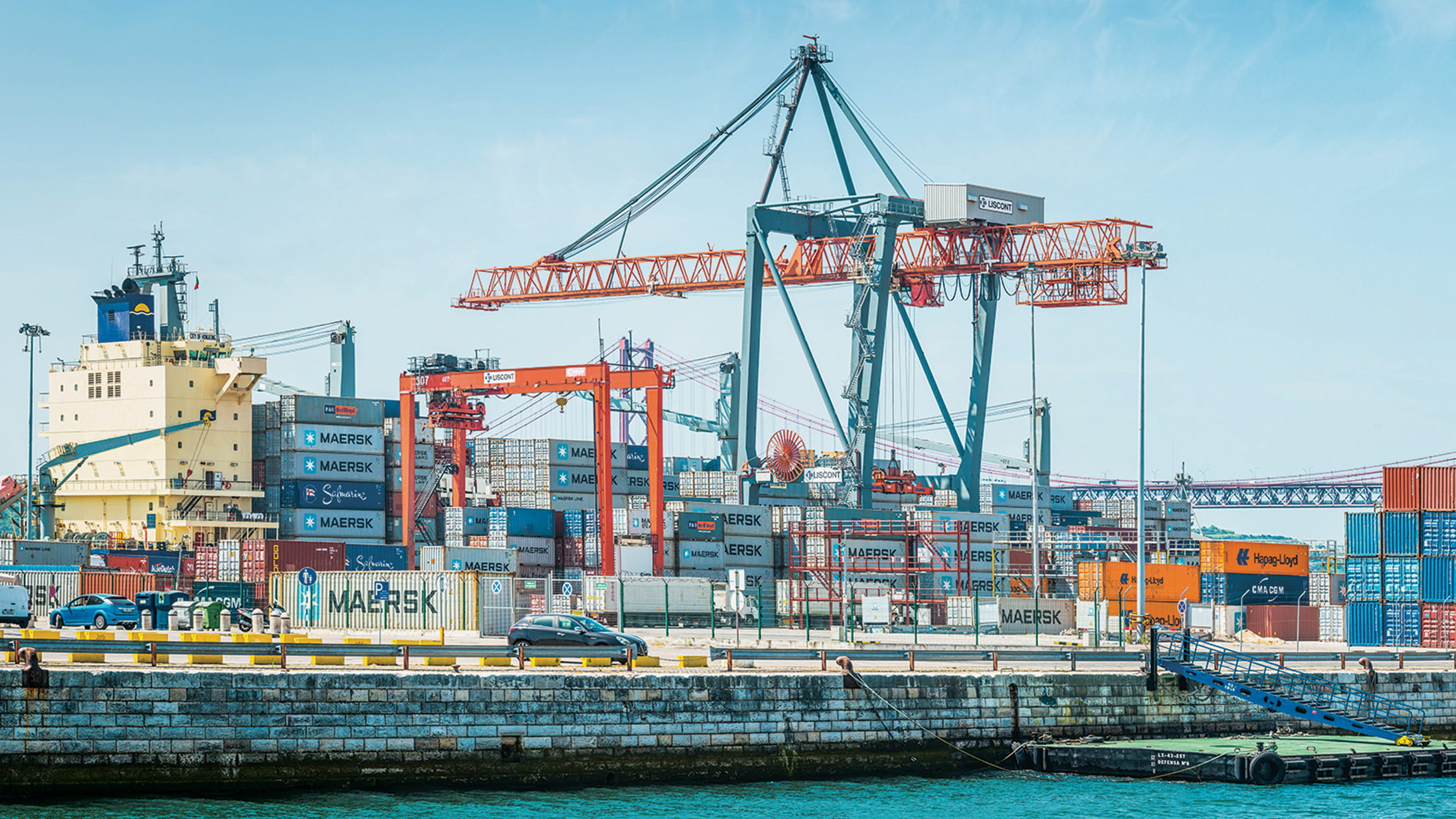China: towards a strategic asset allocation decision

Samenvatting
The MSCI China A-Shares inclusion, which officially started on 1 June 2018, means the China A-Shares market is more relevant for global investors than ever. But why should a global investor buy into China A-Shares, given they already have exposure to China through existing allocation to emerging markets / Asia? We examine how China A can fit into investors’ portfolio now, and in the future.
|
Key takeaways
|
China equity is not a new concept for emerging market participants. Today, China equities account for around 30% of the MSCI Emerging Market Index (“MSCI EM Index”) and 35% of the MSCI AC Asia ex Japan Index1. And these index levels will surely increase. On 1st June 2018, MSCI included China A-Shares into its emerging market indices for the first time. This article assesses the likely long term impact on investor future allocations to China and concludes that as a first step adding China A shares can help improve risk / return profiles. Over the longer term, we expect more investors are likely to decide to allocate to China as an asset class in its own right.
Current China exposure: high concentration, low growth
Let’s take one step back and examine the current typical China allocation in global investor portfolios. Most investors gain exposure to China through global emerging market and/or Asian equity strategies. The 30% China exposure in the MSCI EM Index comes from around 150 China constituents. But around 1/3 of this weighting is dominated by the three internet giants - Tencent, Alibaba and Baidu (“BAT”). Another 40% comes from the old economy sectors such as banks, telecom and utilities, which are dominated bylarge, state-owned enterprises. As a result, China exposure in the MSCI EM Index has a very clear mega cap bias – around 1/2 is dominated by just ten benchmark heavyweights each with a market cap above USD 100 bn. (Chart 1)
Chart 1: China: exposure in MSCI EM Index

Will MSCI China A-Shares inclusion in EM indices help dilute such high concentration? Not in the near term. With only 5% inclusion factor in 2018 – 2.5% on 1 June and 2.5% in September - China A’s weighting in MSCI EM index will be very small at around 0.8%2
China A – structural growth, improved diversification
China A-Shares are Chinese stocks listed on the Shenzhen and Shanghai Stock Exchanges, and traded in Renminbi. They consist of more than 3500 listed equities equivalent to around USD 8.6 trillion market capitalisation3. Of these, around 1500 China A-Shares companies can be easily accessed through the widely-used stock connect schemes.4
Chart 2: China A Shares - number of stocks by sector

In addition to the size of the opportunity set, China A-Shares offer a much more diverse universe for investors, especially in structural growth areas such as consumers, industrials, IT and new materials. For example, there are 322 industrial and consumer stocks within the MSCI China A Onshore Index. This is compared to only 49 in the offshore China exposure of MSCI EM Index. (chart 2) Most of these stocks are unique to China A-Shares, including Chinese spirit brands with a market cap bigger than Diageo; pharmaceutical companies providing diabetes treatments for the aging population, and other names related to areas such as electric vehicle, environment monitoring and IT infrastructure.
Chart 3: China A Shares— market cap breakdown

Source: Bloomberg, Allianz Global Investors, as at 30 April 2018.
China A-Shares can also help EM investors diversify away from mega caps. Approximately half of the MSCI China A-Shares Onshore Index is represented by companies with a market cap below USD 10 bn. The equivalent number is only 10% in offshore China (chart 3).
Why invest into the ‘new economy’, smaller cap companies? One intuitive answer is that these opportunities represent the future drivers for China’s economic growth - consumption, technology and innovation. More than half of China’s GDP is contributed by services. China is a major investor in and one of the world’s leading adopters of digital technologies, especially in the consumer space. And this rich digital ecosystem expands beyond just a few giants, such as Tencent and Alibaba - China is home to one third of the world’s unicorns, that is privately owned companies with more than USD 1 billion market cap5.
China A – Risk/return enhancement to an EM portfolio
China A shares have some further characteristics which make them very different from the typical China exposure you might get in an EM portfolio. More than 90% of the revenue of China A-share companies is domestic driven6 and therefore relatively less sensitive to global macro trends. In addition, China A-share markets are dominated by domestic retail investors, who are typically short term and momentum driven. They therefore behave very differently from global institutions. These elements combined have resulted in a low correlation between China A-shares and the rest of the world. The historical correlation between China A and MSCI EM Index is less than 0.4, meaning 60% of the time these two asset classes move in different directions7.
Chart 4: Risk Return Profile: EM + Allianz China A Shares— market cap breakdown

Source: Bloomberg, Allianz Global Investors, as at 30 April 2018. Hybrid portfolio is calculated using monthly return from MSCI EM Index and gross return of Allianz China A-Shares on a USD basis, assuming monthly rebalancing.
As a result, from a portfolio construction perspective, adding China A-Shares can potentially enhance the risk / return profile for an Emerging Market equity portfolio.
The back test above shows that adding Allianz China A-Shares into an EM portfolio would not only have improved returns but also reduced the overall level of volatility (Chart 4). The same analysis shows similar results using MSCI AC Asia ex Japan and MSCI ACWI Indices8.
Chart 5: China A-shares - weighting in MSCI EM Index

Source: MSCI, Bank of America Merrill Lynch, Allianz Global Investors, as of May 2018. Middle chart is based on MSCI’s proposal in May 2018 to include 233 large cap China A-Shares stocks into MSCI Emerging Market Index. Right chart is based on the assumption that all China stocks are available to be included in MSCI Emerging Market Index. We use a 85% discount factor – which should approximately represent the large and mid cap universe within China A-Shares.
Long term implications of China A-Shares inclusion
Over the coming years, it is very likely that the China A-Shares weighting in the MSCI EM Index will increase significantly to reflect the size of A-share markets. And an emerging market portfolio of the future will therefore likely look significantly different from today.
Assuming a 100% inclusion factor of large and mid cap stocks listed on the Shanghai and Shenzhen stock exchanges, China A-Shares would rise to 28% of the MSCI EM Index. This combined with offshore China means 50% of the MSCI EM Index would be represented by Chinese equities (chart 5).
Many active investors have already started positioning for this structural change. In May 2018, purchases of China A-shares through the stock connect schemes reached a historical high of RMB 51 bn (~USD 8 bn)9. Since the launch of the Shanghai stock connect in late 2014, there has been cumulative buying of RMB 485 bn (USD 76 bn) into China A-Shares. Despite this step change, foreign investors still only own around 2% of the total China A share markets10.
From our own experience a growing number of foreign investors are choosing to access China A-Shares as a strategy separate to their emerging market allocations.
Our view is that over time, the natural next step is for investors to allocate to China - both onshore and offshore combined - as a separate asset class when it becomes too dominant in EM indices. This would be consistent with the way global investors allocate to other dominant economic regions such as the US, Europe and Japan.
Active is…Two ways to access China A-Shares
Allianz Global Investors has extensive experience researching and investing in China A shares. Based in Hong Kong, we launched our first dedicated China A share strategy in 2009. We use a fundamental, active, bottom up approach with a philosophy that it pays to be highly selective.
Depending on investor preference and approach to allocating to China we offer two main strategies to access China A-Shares markets:
- Allianz China A-Shares - a strategy which invests in stocks listed in Shanghai and Shenzhen.
- Allianz All China Equity - a strategy which balances onshore and offshore China equity exposure.
1. Source: Bloomberg, Allianz Global Investors, as at 30 April 2018. 2. Source: MSCI, as at May 2018. Estimation based on 5% inclusion factor of 233 China A-Shares large cap stocks. 3. Source: Bloomberg, Allianz Global Investors, as at 31 December 2017. 4. Source: Shanghai Stock Exchange, Shenzhen Stock Exchange, as at 4 June 2018. 5. Source: McKinsey Global Institute, Digital China: Powering the Economy to Global Competitiveness, as at December 2017. it is not a recommendation or investment advice to buy or sell any particular securities and should not be considered investment advice. 6. Source: Nomura, as at September 2017. Estimation is based on CSI 300 Index. 7. Source: Bloomberg, Allianz Global Investors, as at 31 March 2018. Correlation data is calculated based on historical weekly USD return of MSCI EM Index and MSCI China A-Shares Onshore Index. 8. Source: Bloomberg, Allianz Global Investors, as at 30 April 2018. Hybrid portfolio is calculated using monthly return since March 2009, based on gross returns of MSCI ACWI Index, MSCI AC Asia ex Japan Index and Allianz China A-Shares on a USD basis, assuming monthly rebalancing. 9. Source: Haitong International, as at 31 May 2018. 10. Source: Goldman Sachs, ’A’ primer for global investors (second edition), as at 16 May 2018 Grassroots® Research is a division of Allianz Global Investors that commissions investigative market research for asset-management professionals. Research data used to generate Grassroots® Research reports are received from independent, third-party contractors who supply research that, subject to applicable laws and regulations, may be paid for by commissions generated by trades executed on behalf of clients.
Investing involves risk. The value of an investment and the income from it may fall as well as rise and investors might not get back the full amount invested. Investing in fixed income instruments may expose investors to various risks, including but not limited to creditworthiness, interest rate, liquidity and restricted flexibility risks. Changes to the economic environment and market conditions may affect these risks, resulting in an adverse effect to the value of the investment. During periods of rising nominal interest rates, the values of fixed income instruments (including short positions with respect to fixed income instruments) are generally expected to decline. Conversely, during periods of declining interest rates, the values of these instruments are generally expected to rise. Liquidity risk may possibly delay or prevent account withdrawals or redemptions. The volatility of fund unit/share prices may be increased or even strongly increased. Past performance is not a reliable indicator of future results. If the currency in which the past performance is displayed differs from the currency of the country in which the investor resides, then the investor should be aware that due to the exchange rate fluctuations the performance shown may be higher or lower if converted into the investor’s local currency. This is for information only and not to be construed as a solicitation or an invitation to make an offer, to conclude a contract, or to buy or sell any securities. The products or securities described herein may not be available for sale in all jurisdictions or to certain categories of investors. This is for distribution only as permitted by applicable law and in particular not available to residents and/or nationals of the USA. The investment opportunities described herein do not take into account the specific investment objectives, financial situation, knowledge, experience or specific needs of any particular person and are not guaranteed. The views and opinions expressed herein, which are subject to change without notice, are those of the issuer companies at the time of publication. The data used is derived from various sources, and assumed to be correct and reliable, but it has not been independently verified; its accuracy or completeness is not guaranteed and no liability is assumed for any direct or consequential losses arising from its use, unless caused by gross negligence or wilful misconduct. The conditions of any underlying offer or contract that may have been, or will be, made or concluded, shall prevail. This communication has not been prepared in accordance with legal requirements designed to ensure the impartiality of investment (strategy) recommendations and is not subject to any prohibition on dealing before publication of such recommendations.
The duplication, publication, or transmission of the contents, irrespective of the form, is not permitted; except for the case of explicit permission by Allianz Global Investors GmbH.
For investors in Europe (excluding Switzerland)
For a free copy of the sales prospectus, incorporation documents, daily fund prices, key investor information, latest annual and semi-annual financial reports, contact the issuer at the address indicated below or www.allianzgi-regulatory.eu. Austrian investors may also contact the Austrian information agent Allianz Investmentbank AG, Hietzinger Kai 101-105, A-1130 Vienna. Please read these documents, which are solely binding, carefully before investing. This is a marketing communication issued by Allianz Global Investors GmbH, www.allianzgi.com, an investment company with limited liability, incorporated in Germany, with its registered office at Bockenheimer Landstrasse 42-44, 60323 Frankfurt/M, registered with the local court Frankfurt/M under HRB 9340, authorised by Bundesanstalt für Finanzdienstleistungsaufsicht (www.bafin.de). Allianz Global Investors GmbH has established branches in the United Kingdom, France, Italy, Spain, Luxembourg and the Netherlands. Contact details and information on the local regulation are available here (www.allianzgi.com/Info).
For investors in Switzerland
For a free copy of the sales prospectus, incorporation documents, daily fund prices, key investor information, latest annual and semi-annual financial reports, contact the Swiss funds’ representative and paying agent BNP Paribas Securities Services, Paris, Zurich branch, Selnaustrasse 16, CH-8002 Zürich or the issuer either electronically or by mail at the given address. Please read these documents, which are solely binding, carefully before investing. This is a marketing communication issued by Allianz Global Investors (Schweiz) AG, a 100% subsidiary of Allianz Global Investors GmbH, licensed by FINMA (www.finma.ch) for distribution and by OAKBV (Oberaufsichtskommission berufliche Vorsorge) for asset management related to occupational pensions.
Trump turns the tables on trade

Samenvatting
As President Donald Trump ramps up the trade wars and retaliatory measures spread, investors are entering an unknown landscape – and no one knows what the US will do next. Yet given that trade makes up more than one-third of global GDP, it’s critical to assess what we do and don’t know about how the status quo could change.
|
Key takeaways
|








